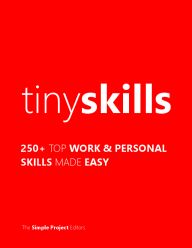Freezers are essential for extra food storage, helping you save money by taking advantage of bulk purchases and sales. Here's a comprehensive guide to help you choose the right freezer for your home.
1. Types of Freezers
Chest Freezers
Pros:
- Offer more usable space due to open interiors.
- Efficient, with lower energy use and less freezer burn.
- Maintain temperatures longer during power outages.
- Quieter than upright freezers.
Cons:
- Harder to organize and retrieve items.
- Larger footprint (e.g., 2x6 ft for 22 cubic feet).
- Require manual defrosting, which can be time-consuming.
Price Range: $200–$1,200.
Upright Freezers
Pros:
- Smaller footprint (e.g., 2.5x2.5 ft for 22 cubic feet).
- Easier to organize with shelves and bins.
- Available in self-defrost or manual-defrost models.
- Stylish finishes like slate or stainless steel.
Cons:
- Self-defrost models can be noisy and allow freezer burn.
- Less energy-efficient than chest freezers.
- Shorter duration for food preservation during power outages.
Price Range: $350–$2,000.
Other Options
- Freezer Drawers: Integrated into high-end kitchens; pricey ($2,000–$6,000).
- Portable Freezers: Compact and versatile for camping or boating.
2. Key Features to Consider
Energy Efficiency
- Look for Energy Star-certified models.
- Chest freezers are generally more energy-efficient than uprights.
Capacity and Size
- Compact (5–9 cubic feet): Best for small spaces.
- Medium (12–18 cubic feet): Ideal for most households.
- Large (18+ cubic feet): For larger families or bulk storage.
Defrosting Options
- Manual Defrost: More efficient, but time-consuming.
- Self-Defrost: Convenient but can cause freezer burn and higher energy use.
Power Outage Performance
- Chest freezers keep food frozen longer during power failures.
3. Cool Features to Look For
- Smart Storage: Tiered bins and adjustable shelves for better organization.
- Temperature Alarm: Alerts you if the interior gets too warm.
- Soft Freeze Setting: Keeps ice cream scoopable without thawing.
- Locking Mechanism: Prevents kids from accessing or leaving the door open.
- Fast Freeze: Quickly chills large quantities of food.
4. Where to Place Your Freezer
- Choose a cool, temperature-controlled location like a basement.
- Check the manufacturer’s specifications if placing in unheated areas like garages.
5. Popular Brands and Price Ranges
Chest Freezers
- Amana: $250–$750.
- Frigidaire: $300–$1,300.
- GE: $200–$850.
Upright Freezers
- Kenmore: $350–$1,500.
- Whirlpool: $350–$1,500.
- Maytag: $500–$700.
6. Maintenance Tips
- Keep the door closed to maintain efficiency.
- Use well-labeled packaging to minimize the time spent searching for items.
- Defrost regularly to prevent ice buildup in manual-defrost models.
Summing it up
Choosing the right freezer depends on your space, storage needs, and budget. Chest freezers are more energy-efficient, while uprights are easier to organize. Look for additional features that enhance usability and efficiency. Whatever you choose, maintaining your freezer will ensure it works optimally for years to come!
Next: Read 2500+ consumer guides to shopping, electronics, appliances, home services, cars, money and more.

